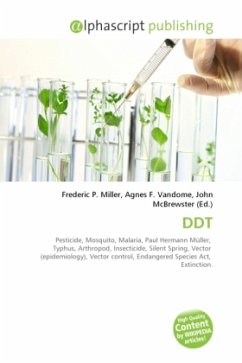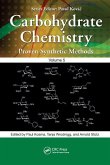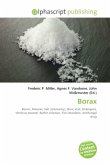DDT (from its trivial name, dichlorodiphenyltrichloroethane) is one of the most well- known synthetic pesticides. It is a chemical with a long, unique, and controversial history.First synthesized in 1874, DDT's insecticidal properties were not discovered until 1939. In the second half of World War II, it was used with great effect to control mosquitoes spreading malaria and lice transmitting typhus among civilians and troops, resulting in dramatic reductions in the incidence of both diseases. The Swiss chemist Paul Hermann Müller was awarded the Nobel Prize in Physiology or Medicine in 1948 "for his discovery of the high efficiency of DDT as a contact poison against several arthropods." After the war, DDT was made available for use as an agricultural insecticide, and soon its production and use skyrocketed.
Bitte wählen Sie Ihr Anliegen aus.
Rechnungen
Retourenschein anfordern
Bestellstatus
Storno








